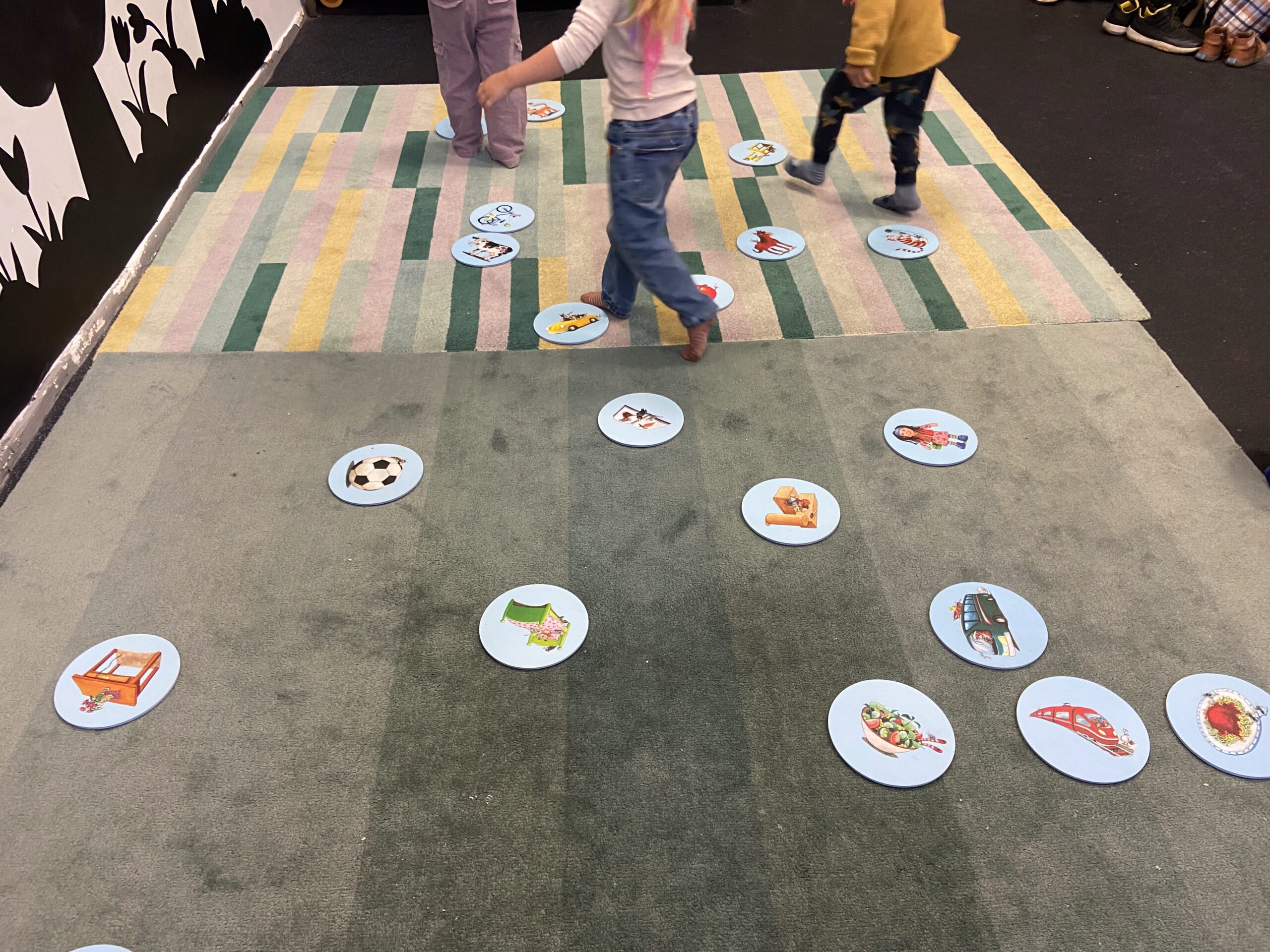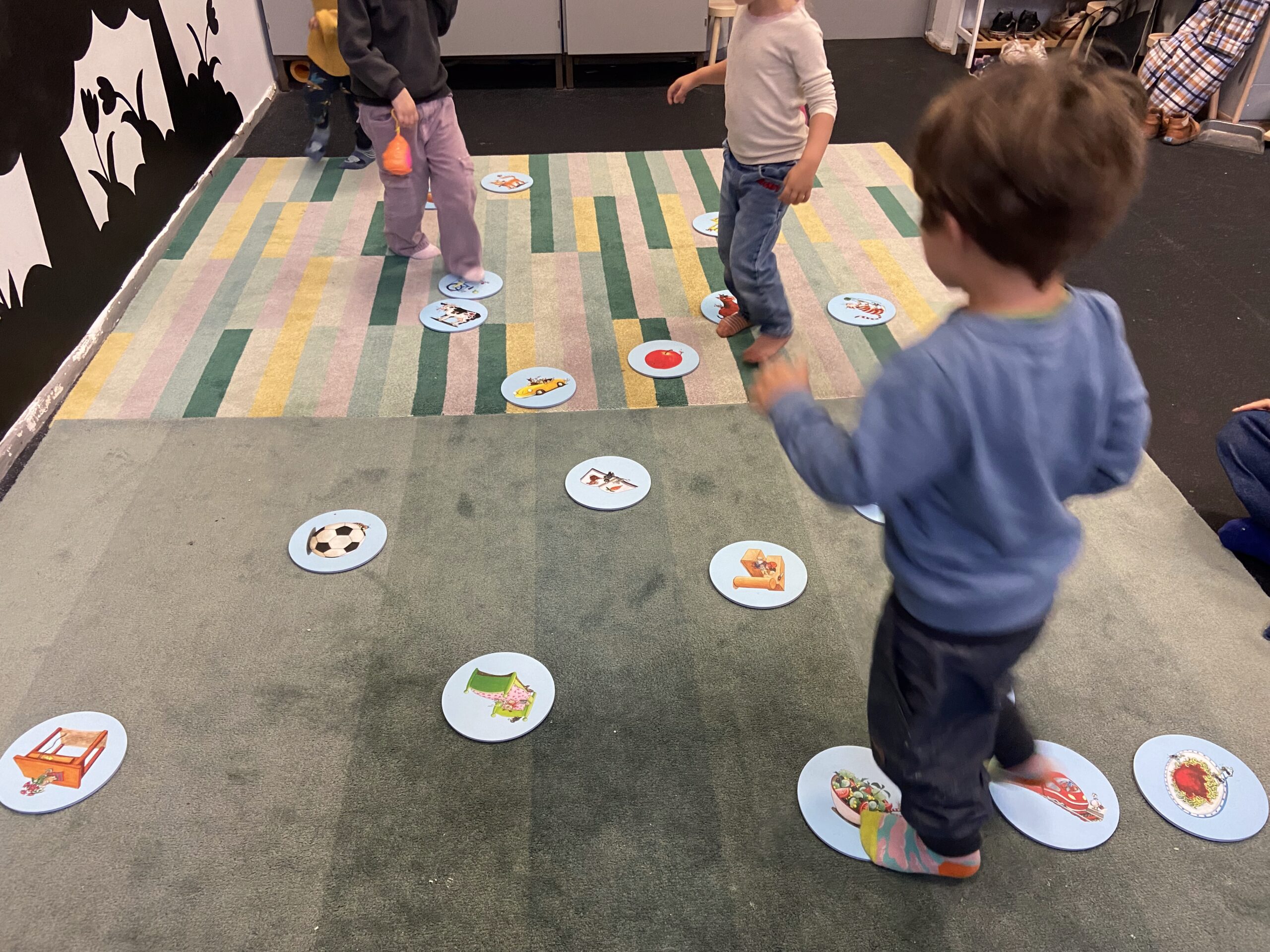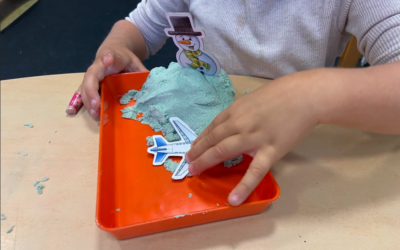Stop Dance with Pictures
Stop Dance with Pictures
15-20 min
2-6 years old
1-10 ppl
This activity supports children’s cognitive, social, and physical development by combining movement, language learning, and creative thinking. They enhance observation, categorization, and vocabulary skills while developing confidence, intercultural awareness, and active listening. Dancing and reacting to instructions improve motor skills, coordination, and spatial awareness, while rhyming and problem-solving foster creativity and critical thinking.
Language skills
A1 – A2
Assorted picture cards with various images (animals, objects, food, etc.), Music player.

Languages Available
1. Preparation:
Scatter the picture cards randomly on the floor. Make sure there’s enough space between them for the children to move around freely.
2. Introduction to the activity:
Gather the children together and explain the rules of the game: They will dance and move around the room while the music is playing. But when the music stops, they must quickly find a picture, stand on it and freeze!
3. Start the game:
– Play some upbeat music and encourage the children to dance or run around the room.
– After a short while, stop the music.
– The children must quickly find a picture, stand on it and freeze.
4. First round – identifying features:
– Once everyone is standing on a picture, the facilitator gives instructions related to the pictures, for example:
– “If your picture has something red on it, jump up and down.”
– “If your picture shows something tasty, clap your hands.
– “If your picture has an animal, shout ‘Hooray!'”
– Let some children act out these requests, then repeat with new instructions (e.g. something soft, something round).
5. Second round – Naming in the family language:
– After a few rounds of dancing and freezing, ask the children to look at the picture they are standing on and say the name of the object in it in their native language.
– Go around the room and have each child share their word. This adds a fun, multicultural element to the game and encourages everyone to learn new words.
6. Advanced round – rhyming challenge:
– For an extra challenge, ask the children to think of a rhyme for the object in their picture.
– For example, if a child has a picture of a cat, they might say, “Cat and hat!”
– Help younger children with this task to encourage creativity and playful thinking.
7. Repeat the round:
– Start the music again and continue the game for several rounds, mixing in different instructions and challenges.
– Adjust the tempo of the game to keep it dynamic and engaging.
8. Closing the activity:
After the last round, gather the children in a circle. Thank them for playing and celebrate how they used both movement and language to explore the pictures.

For Educators & Teachers
Preparation
-
Gather Materials
Picture cards with diverse objects (e.g., animals, food, household items, nature elements) depending on the topic you’d like to focus and a music player with upbeat songs that may be related to the topic. -
Prepare the Space
Clear an open area for movement and scatter the picture cards on the floor with enough space for children to move freely. -
Plan the Instructions
Think of prompts for identifying features (e.g., colors, shapes, categories).
Prepare examples for the naming round (you can encourage using different languages).
Have simple rhyming examples ready for younger children.
Expected output
This activity enhances children’s language skills by expanding vocabulary, improving pronunciation, and fostering phonemic awareness through naming and rhyming. It strengthens cognitive abilities like observation, categorization, and problem-solving while boosting social confidence, cultural appreciation, and cooperative play. Physically, it supports coordination, balance, and reaction time through movement. Creativity is encouraged as children engage in imaginative responses and playful interactions, making learning dynamic, inclusive, and fun.
Adaptation/Application of the method
1. Different language levels:
– Allow children to describe their pictures in words, gestures, or sounds if they struggle with vocabulary.
– Pair children with different language skills to support each other.
– Provide hints or visual aids to help with word recall.
2. Group dynamics:
– Establish clear rules to ensure turn-taking and respect for others’ contributions.
Encourage quieter children by directly inviting them to participate.
– Adjust the tempo of the game to keep all children engaged, avoiding frustration or boredom.
– Keep rounds short and dynamic to maintain engagement.
– Modify movement-based instructions to be inclusive for all abilities.
– Provide positive reinforcement and avoid pressuring children to speak if they are uncomfortable. You can offer non-verbal participation options, such as pointing or miming.
3. Cultural sensitivity:
– Use diverse picture cards that reflect different cultural backgrounds.
– Be mindful of words or gestures that may have different meanings in various cultures.
– Foster an inclusive atmosphere by celebrating all languages equally and avoiding corrections in pronunciation.
4. Physical space limitations:
– If space is small, use a slower movement style like walking or tiptoeing instead of running.
– Reduce the number of picture cards and adjust their placement to fit the area.
– Consider playing in smaller groups or taking turns if space is very restricted.
Developed by / Origin / Original language
Marinessa Radchenko, Koopkultur e.V. / Ukraine, Germany / Ukrainian, Russian
References, and Resources
HABA “Ratz Fatz – in Bewegung” Spiel: https://www.betzold.de/prod/100370/
Find free/Paid characters to download: https://www.freepik.com/
Similar Activities
Training Post
Let children be creative with kinetic sand as they explore textures, create shapes and bring their own imaginative stories to life with sand and cardboard characters in this interactive storytelling activity
Proverbidioms
This activity helps participants understand idioms by turning them into creative drawings. While having fun, they learn the meaning behind unusual expressions, explore how language works, and practice using their imagination.

